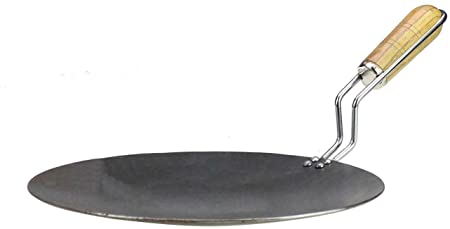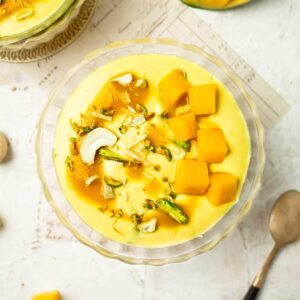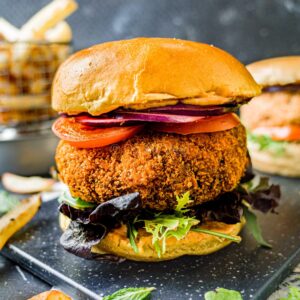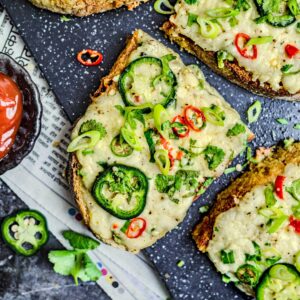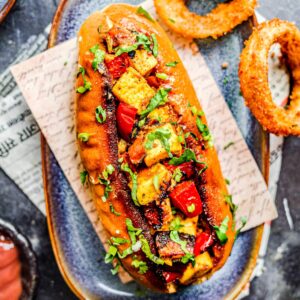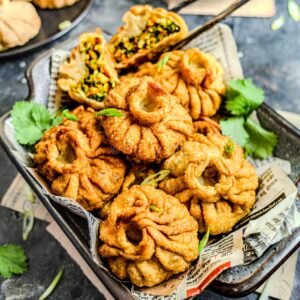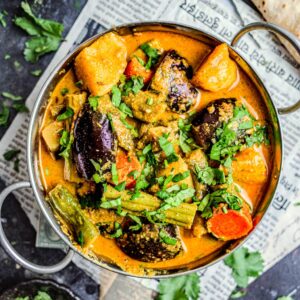Methi Paratha, Indian Fenugreek Flatbread
Made with tons of fresh fenugreek leaves, gently spiced with turmeric, warm cumin, and thyme-scented ajwain seeds, and finished with a strong garlicky flavour, methi parathas are packed with incredible layers of seasoning.
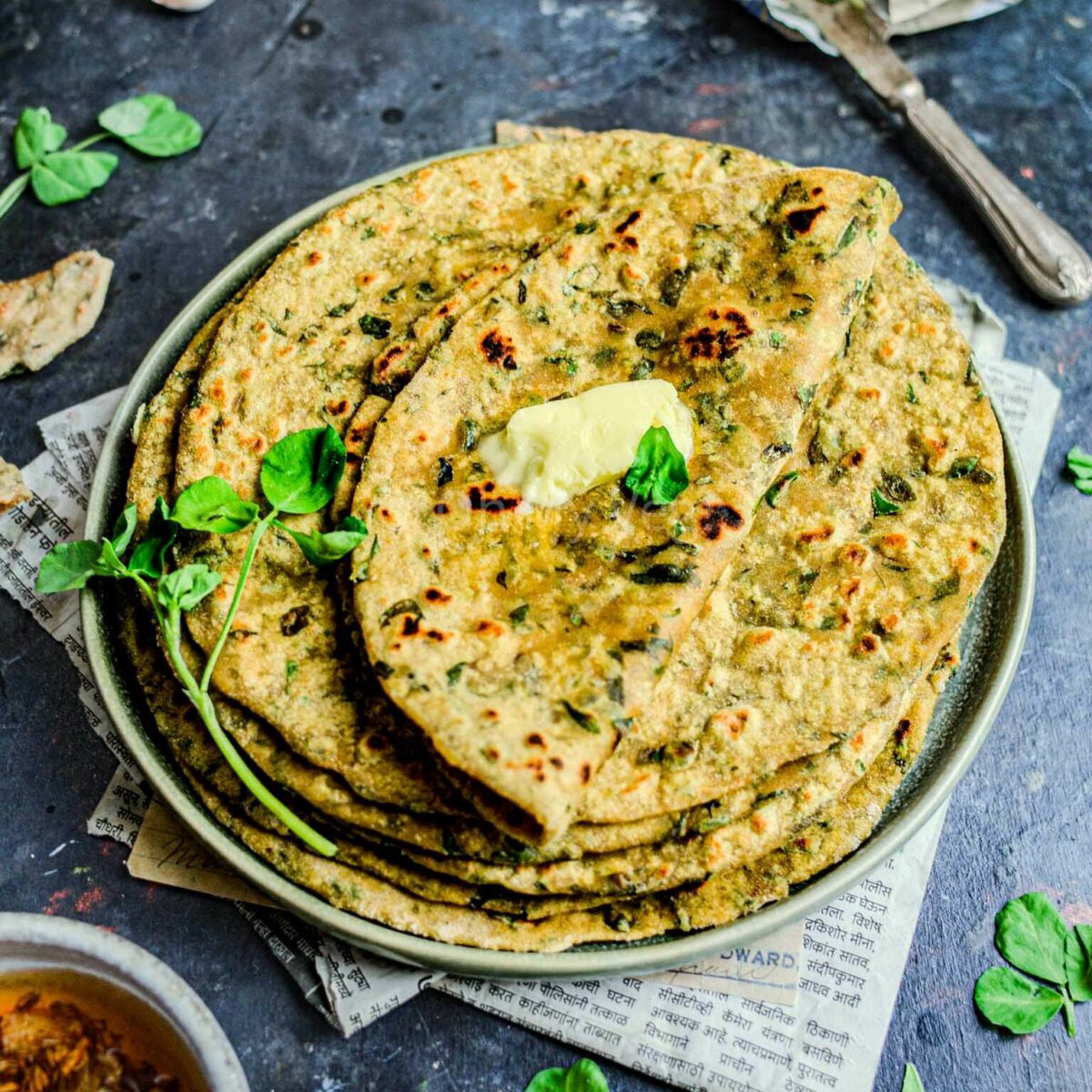
Over the years I’ve come to be completely enamored with Indian breads. I probably make some variety of Indian bread at least once daily — so you could call me somewhat of an expert. There’s nothing better than the aroma of fresh bread wafting through the house, after all, and these methi parathas smell heavenly!
Why should you make this recipe? Well, methi paratha isn’t a flatbread you can buy from the supermarket or restaurant. This is good, old-fashioned homely bread traditionally served for breakfast along with pickles or curd. Countless people also like to pack methi parathas for lunchbox (to take on picnics, as school dinner, or to work).
If you typically make chapati (roti), garlic naan, or paratha, you’ll love switching things up with these soft, buttery methi parathas! You can even grow your own methi and have fresh microgreens ready in 1-2 weeks to use for the parathas — or other delicious fenugreek dishes like methi malai paneer, aloo methi, or methi gholana.
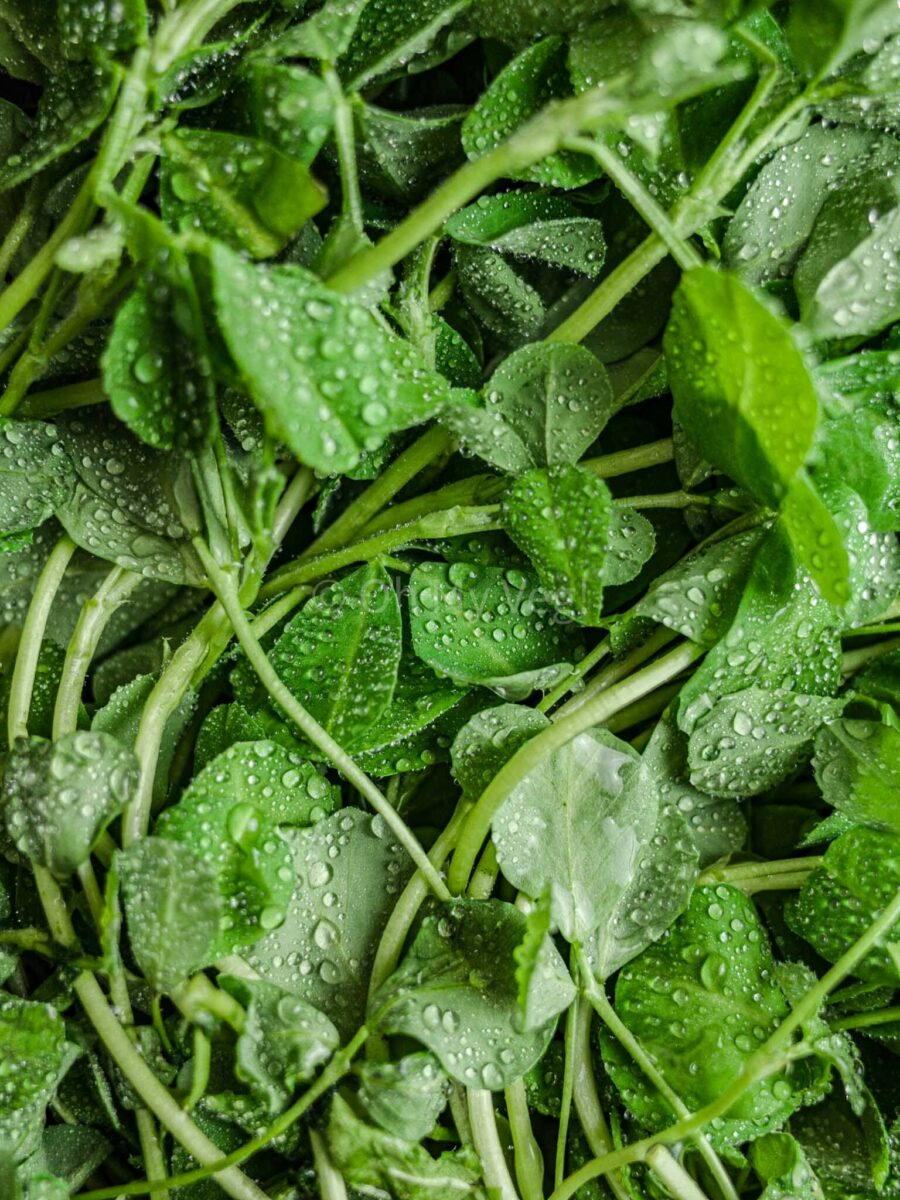
What is Methi Paratha Made Of?
At its heart, methi paratha is a homely, rustic, and comforting dish. I’ve added a handful of extra ingredients that make the parathas even more drool-worthy, but it’s completely okay to skip them!
There are many times I make these fenugreek flatbreads with just four ingredients: methi (fresh fenugreek leaves), salt, chapati flour, and water. If you follow the recipe with just those ingredients, they will taste delicious too.
If you cook Indian food regularly, these ingredients are pantry staples. Otherwise, you’ll likely need to head to your local Indian grocery store (or my Amazon storefront) for a few ingredients. I recommend keeping this list to hand as a shopping reference.
Methi Paratha Ingredients
- Methi is the Hindi name for fresh fenugreek leaves. They have a rich, slightly sweet, and distinctly bitter flavor. Head to your local Asian store for fresh bunches.
- Chapati flour is a MUST to make good paratha. Under no circumstances should you substitute this for all-purpose (plain flour or maida) or wholewheat flour. What’s more, use chakki atta (stone ground flour) for the best results.
- Garlic marries with fresh fenugreek beautifully.
- Turmeric powder adds color and boosts the earthy, gently bitter flavor profile of the methi.
- Cumin powder is sweet and warm. We only need a touch!
- Ajwain seeds are aromatic and pungent. Crush them between your palms before adding them to the dough.
- Water binds the dough together.
- Oil is used when we fry the paratha on the tawa and gives it a delicious flavor.
If you don’t have fresh fenugreek …
You can use kasuri methi (dried fenugreek leaves) instead! While it won’t have exactly the same flavor and I highly suggest seeking fresh methi if you. have access to it — you can also grow methi at home easily — kasuri methi is far more accessible and still results in a delicious flatbread.
Methi Paratha Allergens
Of course, these methi parathas are completely vegetarian, but they’re also suitable for a wide range of other dietary preferences and needs:
- This methi paratha recipe is 100% vegan and dairy-free. I recommend cooking your parathas with neutral oil, but you can swap it for plant-based butter. Furthermore, although people traditionally serve the parathas with butter, a plant-based alternative is just as tasty!
- Methi parathas are also nut-free. This is great news for anyone with a nut allergy!
- Alcohol-free is another bonus, especially for people with religious or lifestyle restrictions.
- The fenugreek flatbreads are soy-free too. However, although the recipe is soy-free as written, if you use vegan butter, you’ll have to check the ingredients list.
Unfortunately, methi paratha isn’t gluten-free as it contains chapati flour (atta). You can buy gluten-free atta from the Indian store, but I haven’t tried it. If you do, please leave a comment on this recipe below!
Alternatively, many other Indian bread recipes, such as Marathi jwarichi bhakri (jowar or green millet roti), bajarichi bhakri (bajra or pearl millet roti), and nachnichi bhakri (ragi or finger millet roti) are 100% gluten-free.
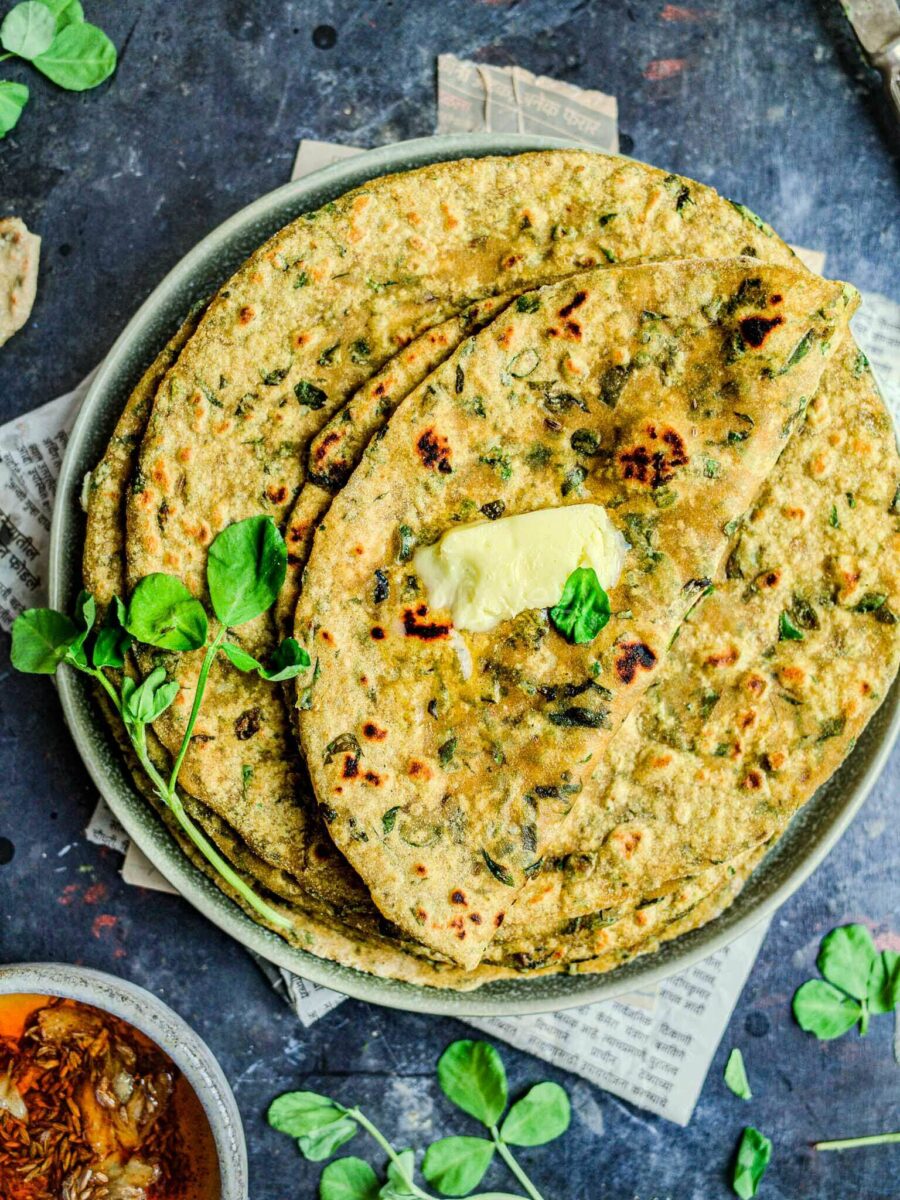
How to Make Methi Paratha
Compared to leavened bread like naan or foccacia, methi parathas follow a straightforward method:
- Prepare the methi by washing it thoroughly, picking the leaves from the stems, and then roughly chopping.
- Mix the dough by combining chapati flour with the chopped methi and seasonings. Gradually add the warm water and knead to make a soft dough. Let it rest for 10 minutes.
- Roll out the parathas by separating the dough into 8 equal-sized dough balls. Take extra chapati flour in a bowl and dip one dough ball into the flour. Flatten it with your hand and on an Indian rolling board (chakla) start rolling it out using an Indian rolling pin (belan).
- Cook the paratha by heating a tawa over medium heat. Add a drizzle of oil, then carefully place the paratha onto the tawa. Cook until the bottom has changed color and bubbled slightly, then flip and cook the other side.
- Continue to roll out and cook the parathas following this method. While you cook the parathas, store the finished ones in a pile or use a chapati warmer.
If you want to make excellent Indian breads like paratha, chapati, or puri, having the right tools/cookware at your disposal is crucial. Indian rolling boards and pins, mixing bowls, and of course the tawa (a concave pan without sides) make a world of difference:
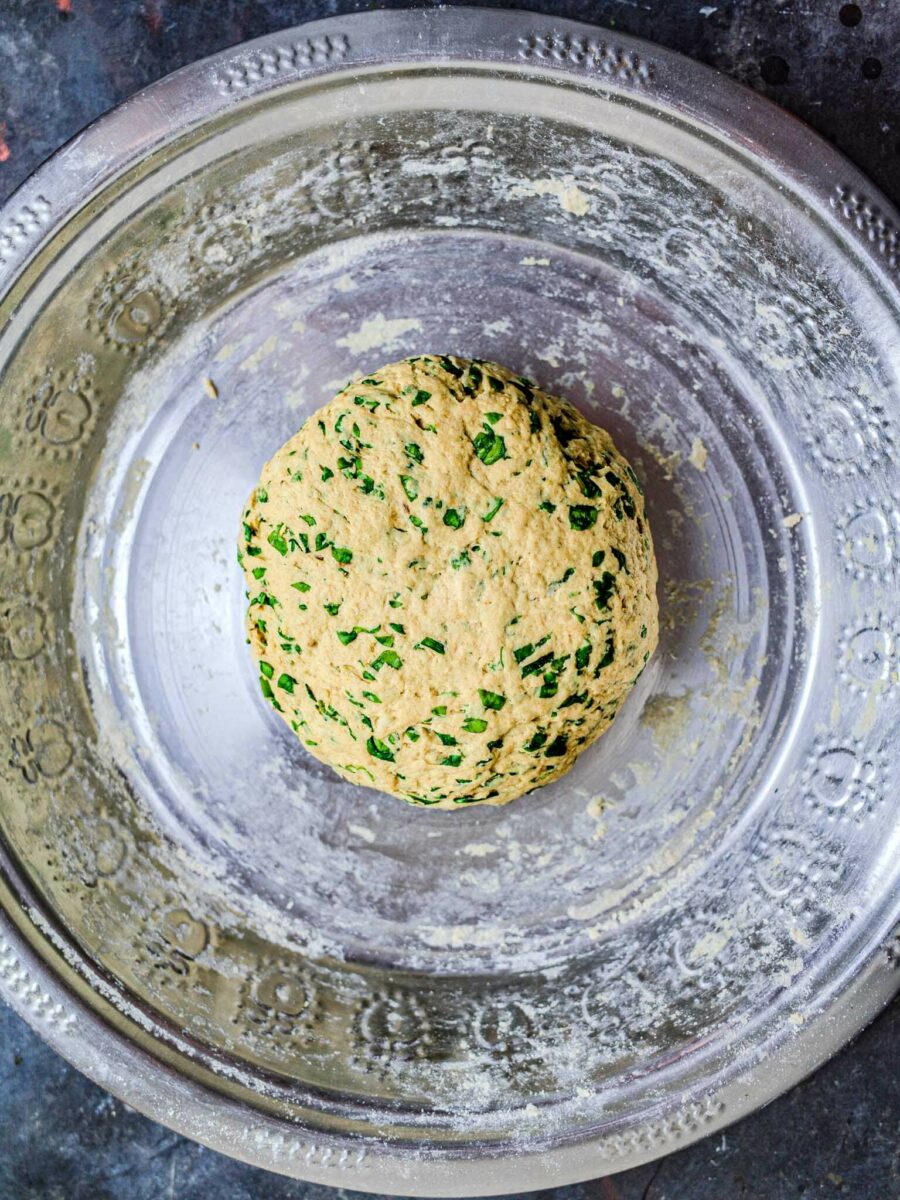
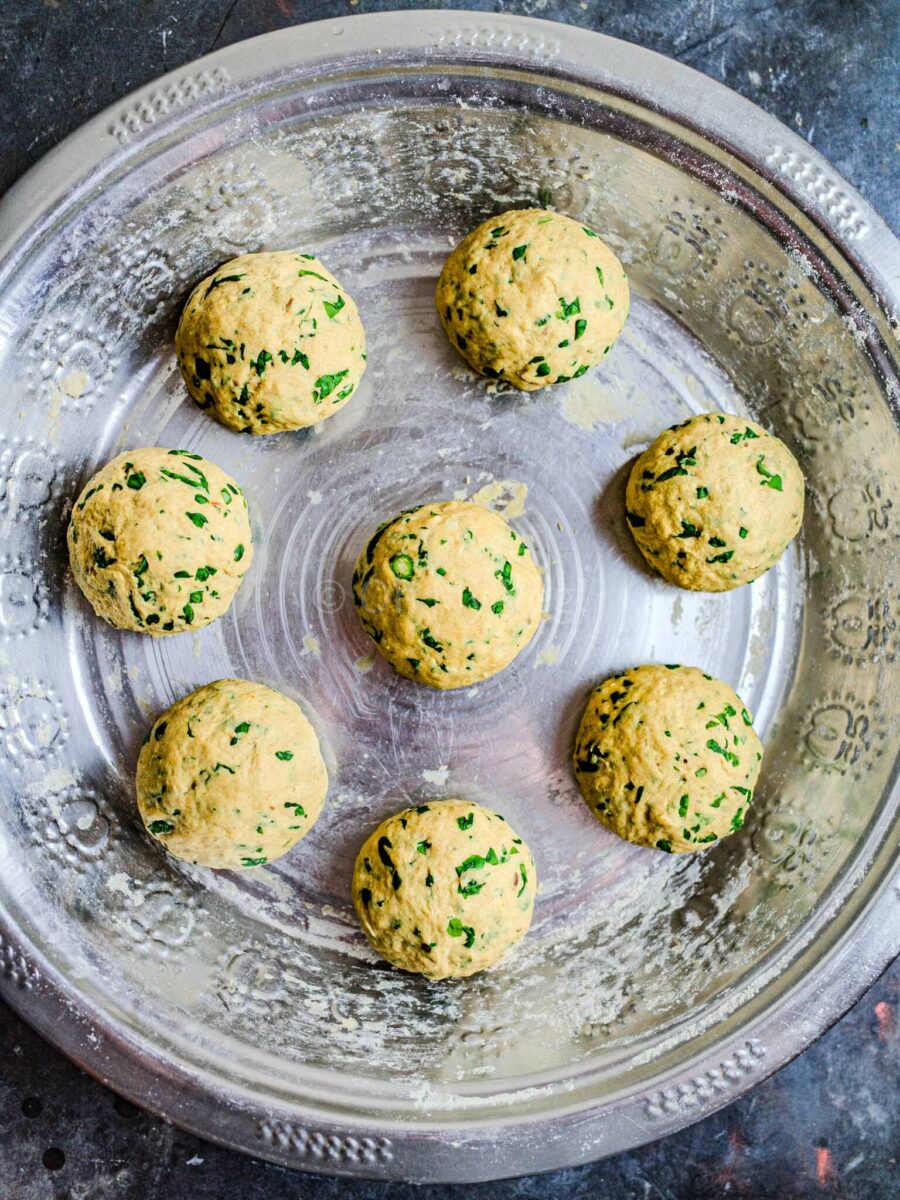
Tips to Make the Best Methi Paratha
Even though methi parathas are fuss-free and astonishingly speedy to prepare, you generally need a little practice to perfect the recipe.
However, with these expert tips (I’ve been cooking parathas for over 10 years, now!) you’ll find yourself making mouth-watering parathas in no time.
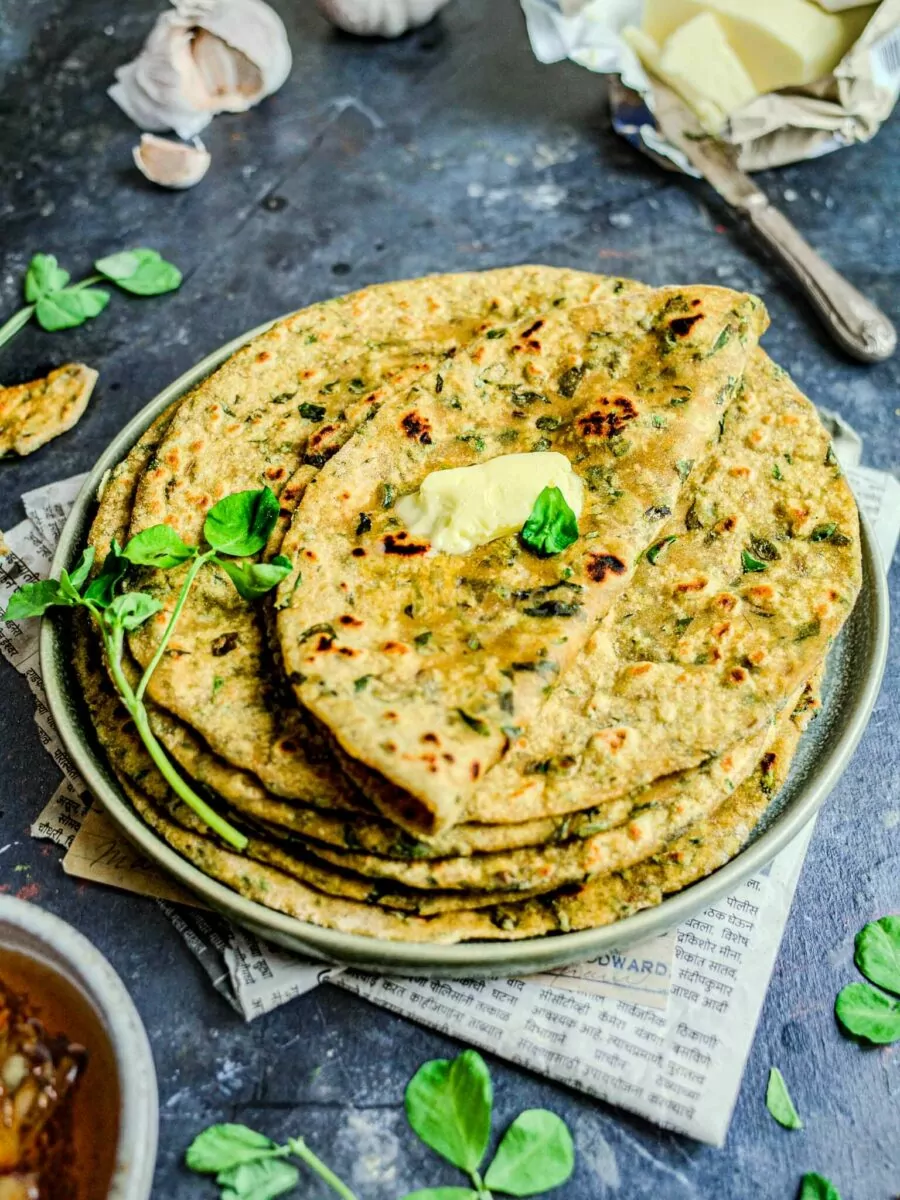
What Goes With Methi Paratha
My all-time favorite side dish with methi paratha is what the family calls a “poor man’s chutney.” Essentially a tempering (tadka), it’s made by crackling cumin seeds and crispy, buttery garlic in plenty of oil before finishing it with fiery chili powder. Dunking pieces of the methi paratha in the oily goodness is unbelievably moreish.
Moreover, there are dozens of popular combinations. Here are some of the gems:
- Methi paratha with sabji — a dry vegetable-based curry — is a classic pairing. I love it with potato-forward dishes like batatyacha rassa or jeera aloo. On the other hand, the methi marries beautifully with dishes that highlight pulses, like chana masala or dal tadka.
- Mix a savory raita or have methi paratha with dahi (yogurt) sweetened with sugar. Methi paratha with curd is a classic union!
- Methi paratha with chutney is a real crowd-pleaser. There are many options: green chutney, tomato chutney, tamarind chutney, and even tomato ketchup are wonderful choices.
- Mango pickle, green chili pickle, garlic pickle, or even lemon achar — is a fun combination, and methi paratha with pickles is always popular.
So, if you’ve been wondering what to eat with methi paratha that’s vegetarian, hopefully, this gives you some inspiration! ✨
How to Store Methi Paratha
Can’t finish all the paratha at once? No problem! You can wrap the methi parathas in tinfoil, place them in an airtight container, and store them in the refrigerator for up to three days.
Surprisingly, you can also freeze methi paratha! All you have to do is slightly undercook the paratha without using any oil. Next, layer them between parchment paper (to prevent sticking), and bag them up.
For sustainable storage, I like to choose compostable bags for a greener future! Plus they’re sturdy, to ensure no ice crystals or smells get into the parathas. You can freeze them for up to three months, then reheat them on a tawa, frying pan, or microwave.
This Recipe Is:
Methi Paratha
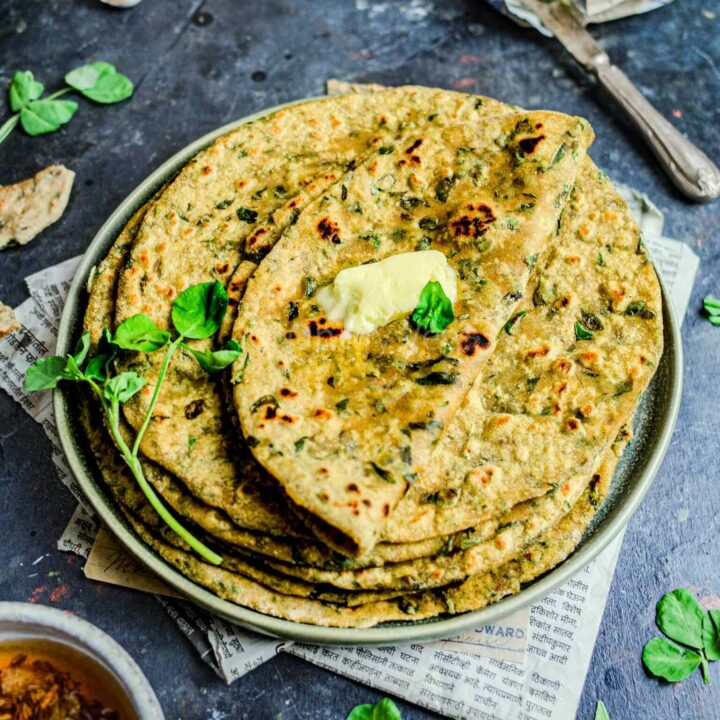
Methi paratha is a healthy flatbread made with fresh fenugreek leaves, garlic, and spices. It's soft, buttery, and easy to make.
Ingredients
- 80g / 1 Large Bunch Methi (Fresh Fenugreek Leaves)
- 340g Chapati Flour (Chakki atta)
- 2 Cloves Garlic, finely minced
- 1/8 tsp Turmeric Powder
- 1/2 tsp Cumin Powder
- 1/2 tsp Ajwain Seeds
- 270ml Warm Water
- 1/2 tbsp Oil
Instructions
- Prepare the methi. Wash it thoroughly, pick the leaves from the stems, and then roughly chop.*
- Make the dough. In a parat, combine chapati flour with chopped methi, minced garlic, turmeric powder, cumin powder, and ajwain seeds. Gradually add the warm water and knead the dough by pressing it with the palm of your hand and pushing it forward. Knead until the dough is soft. Cover with a damp cloth and let it rest for around 10 minutes.
- Roll out the parathas. Separate the dough into 8 equal sizes, and roll each into a smooth ball. Take one ball and dip it into a small bowl with extra chapati flour. Place it onto the rolling board and flatten it with your palm. Take an Indian rolling pin and gradually start to roll the paratha into a circle. As a beginner, use slow, even movements and roll in only one direction. Turn the paratha and roll in that direction. Repeat this until your paratha are about 8" in diameter.
- Cook the paratha. Heat the tawa over medium heat. Add a drizzle of neutral oil. Using your hands, brush off any excess flour from the paratha (traditionally, this is done by "throwing" the paratha between your hands), then place it on the tawa. Cook until the bottom has changed color, then flip the paratha and cook the other side, applying more oil to the edges.
- Repeat this process for the remaining paratha. While you cook the parathas, you can store the finished ones in a pile (they should retain their heat) or use a chapati warmer.
Notes
*If the methi is overly bitter, you can soak it in hot salted water for 10 minutes.
Recommended Products
As an Amazon Associate and member of other affiliate programs, I earn from qualifying purchases.
Nutrition Information:
Yield:
8Serving Size:
1Amount Per Serving: Calories: 193Total Fat: 5gSaturated Fat: 1gTrans Fat: 0gUnsaturated Fat: 2gCholesterol: 0mgSodium: 129mgCarbohydrates: 32gFiber: 5gSugar: 1gProtein: 5g
Nutrition information isn’t always accurate.






